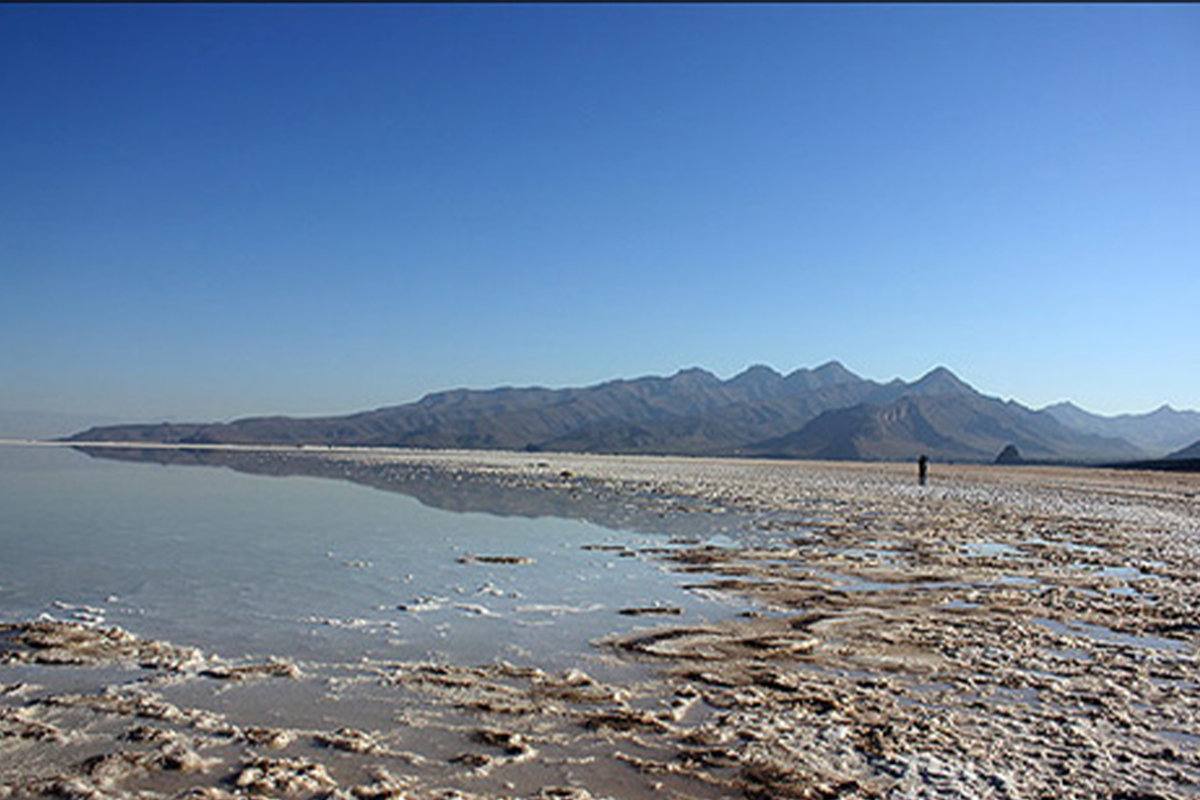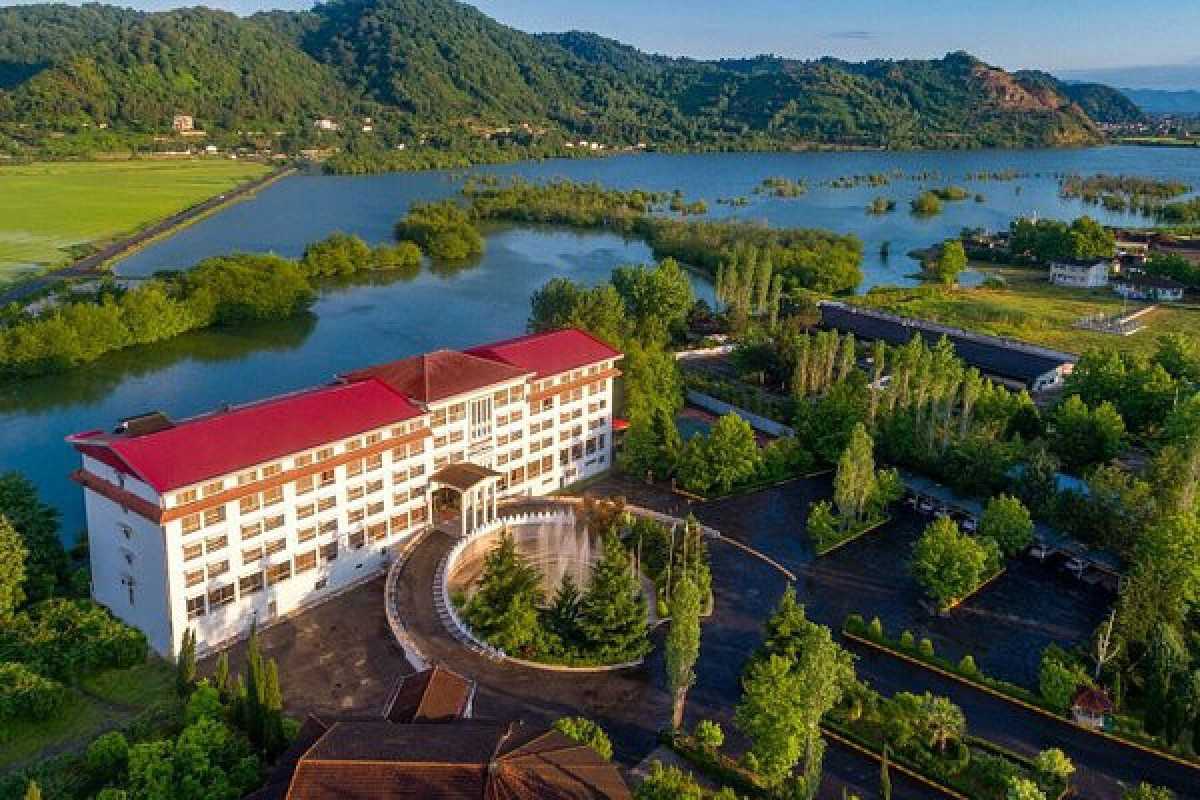APA presents an article by Mohammad Rahmanifar dedicated to the drying up of Lake Urmia within the framework of the "Know South Azerbaijan" project.
Khoy city: An impregnable fortress of Azerbaijanism and freedom trench
URMIA: Beating heart of Azerbaijanism
How does the Tehran regime Persianize Turkish toponyms in South Azerbaijan?
Azerbaijani saz wrapped in an American flag and thrown into a fire in Tabriz
One of the prominent historical places in South Azerbaijan -Sheheryeri
Lake Urmia (Urmu) is located in the north-west of the current borders of Iran, between the provinces of West and East Azerbaijan, and due to its unique ecological characteristics, it was designated as a "protected zone" in 1967, a "National Park" in 1970, and a "National Park" in 1976 by UNESCO. It is registered as a "biosphere reserve".
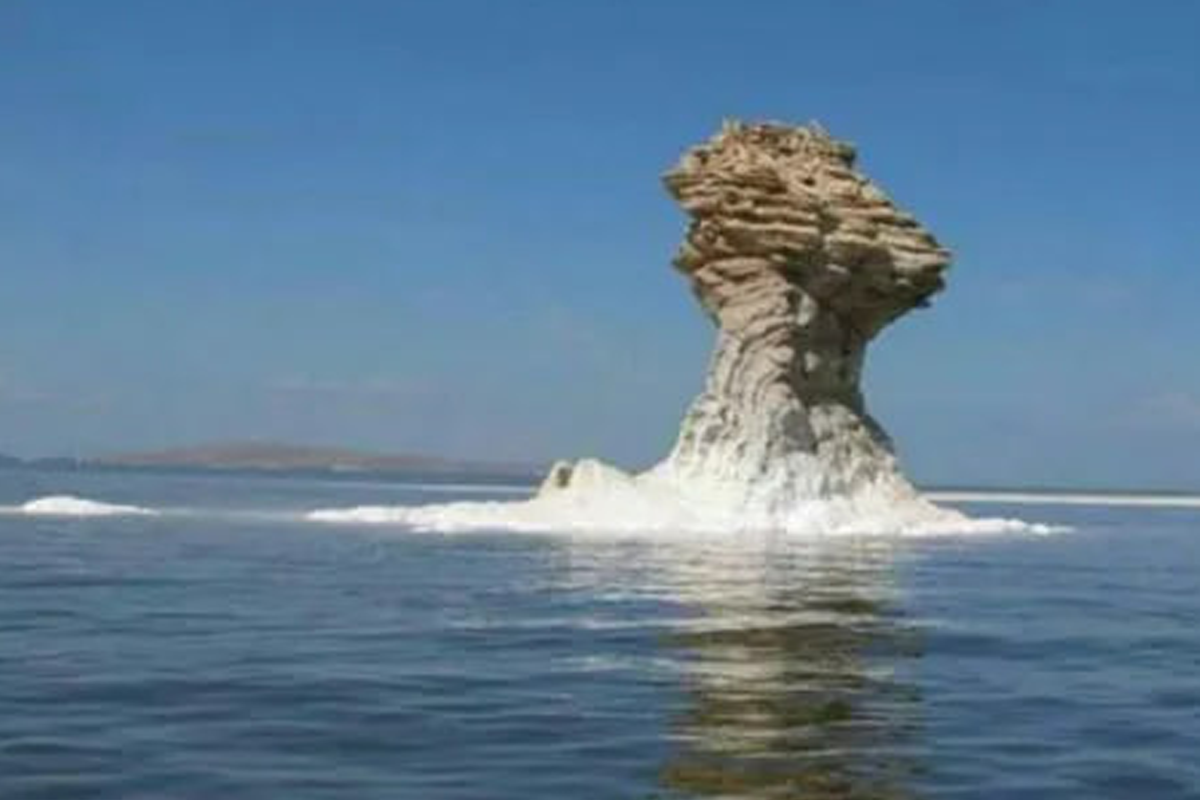
(Osman's fist rock wearing a white salt shirt. Until 20 years ago, the rest of this rock was underwater, except for the tip. Currently, the bottom of the rock is also covered with salt, and there are no traces of the water that can be seen around it)
Before the drying process, this water body was known as the largest inland lake within the current borders of Iran and the second-largest brackish water lake in the world, with an area of about 6,100 square kilometers. However, until the mid-1990s, the biggest problem was diverting its water to agricultural fields, and this lake turned into a salt desert within 10 years. The first evidence of the decrease of water and the beginning of the drying process of Lake Urmia were observed in the late 90s. The first warnings in this regard were given by researchers and experts such as Naser Ag, a member of the Urmia University faculty. In September 2001, the "Navid-i Azerbaijan" newspaper, which was the most popular newspaper in South Azerbaijan at that time, brought up the threat of drying up of Lake Urmia in the next 15 years with a big headline.
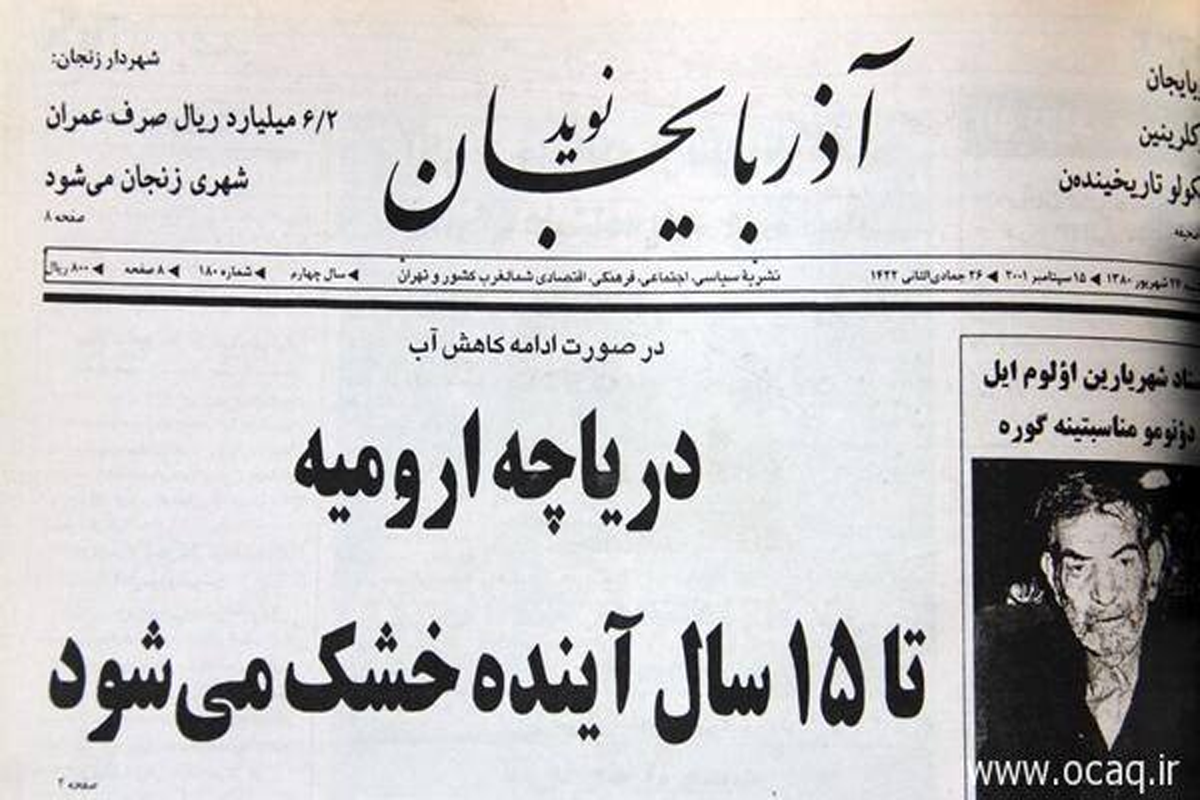
(Lake Urmia will dry up in the next 15 years. "Navid-i Azerbaijan" newspaper, September 2001)
In fact, people's demands and protests regarding the drying up of Lake Urmia started from those days. In those days, many people of South Azerbaijan thought that the drying up of Lake Urmia was caused by environmental problems and improper management of water resources, and they thought that they could make the government understand through protests and calls and turn them away from this wrong path. However, the officials of the Islamic Republic of Iran not only ignored the experts' warnings, but even labeled these activists as criminals. Protests and gatherings of Azerbaijani ecologists and cultural activists were severely suppressed. On the other hand, the policy of unaccountable exploitation of groundwater and running water, which began during the presidency of Hashemi Rafsanjani, was continued.
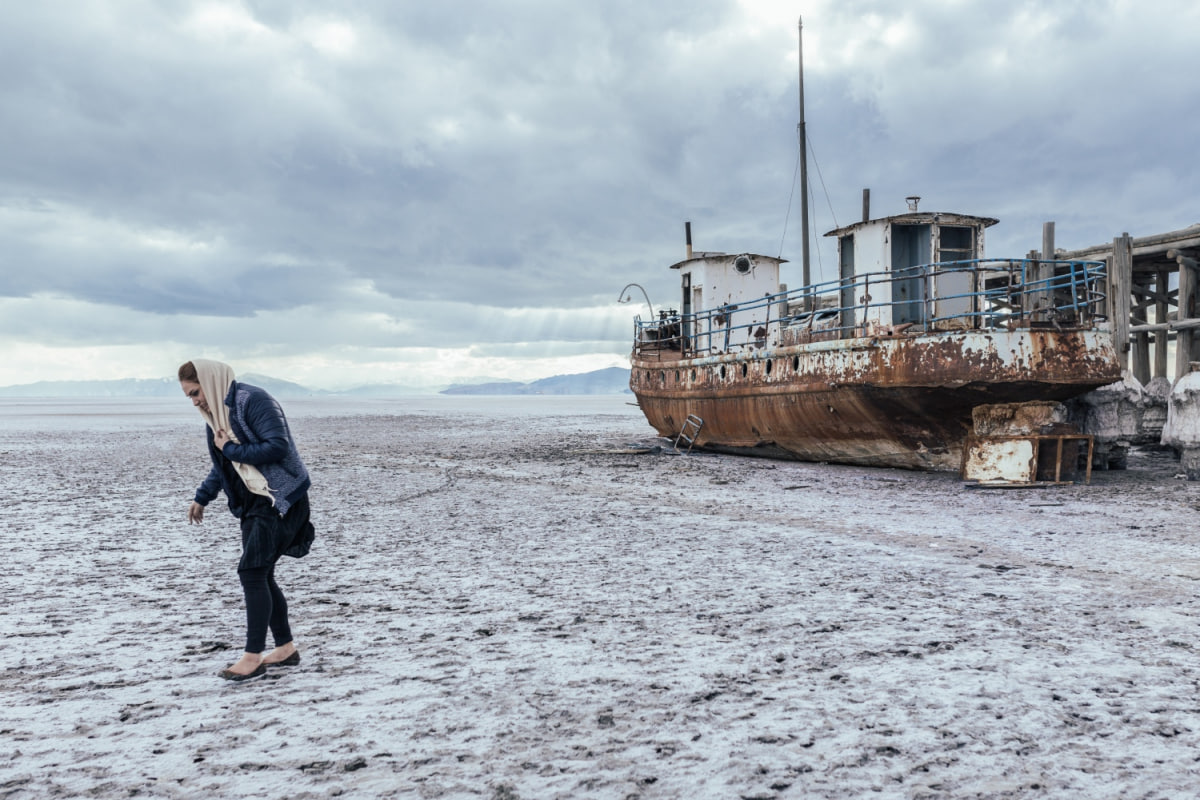
(A ship sunk in salt; 15 years ago, this ship was carrying passengers from Tabriz to Urmia)
As a result of the critical situation of Lake Urmia and the authorities of the Islamic Republic of Iran ignoring the warnings of researchers and international organizations, university professors and environmental activists in South Azerbaijan founded the "Save Lake Urmia" campaign in the late 2000s. This large-scale campaign almost later became the most comprehensive environmental campaign in Iran's history. Nevertheless, as a person who has been involved in the events related to Lake Urmia from the beginning and has been more or less active in the mentioned campaigns in addition to following the news, I believe that it is impossible to talk about a unique campaign under a specific leadership team and with a certain policy regarding Lake Urmia. In fact, there have been many campaigns by different people in the last 15 years. For example, so far only a few campaigns have been carried out to collect signatures for the restoration of Lake Urmia.
It should be noted that one of the most important goals of the campaigns to save Lake Urmia was to try to attract the attention of public opinion and inform the public about the drying up of this lake. The next step was to try to use the power of the people and put pressure on the parliamentarians to force the government to change the water resources management policy of the Lake Urmia basin.
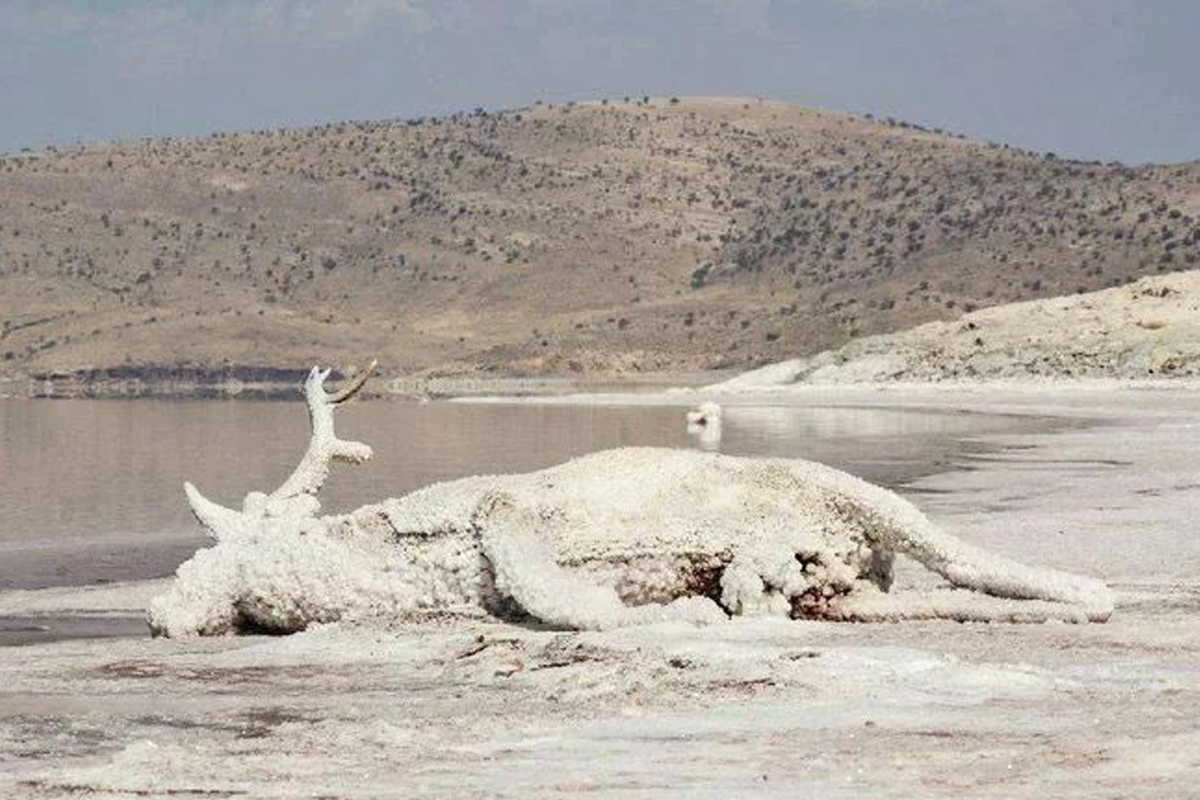
On the second day of April 2010, in order to attract the attention of public opinion and to protest the government's lack of attention to the issue of Lake Urmia, in the first public action, a group of active South Azerbaijani people decided to hold the Nature Day ceremony on the intermediate bridge of Lake Urmia and "Protest the policy of the Iranian government to drain Lake Urmia." they invited. It should be noted that in Iran and South Azerbaijan, the second day of April, the 13th day of the new Hijri year after the Nowruz holiday, is celebrated as Nature Day, and on that day people go out into nature and celebrate.

(Intermediate bridge of Lake Urmia; This bridge, which was built without a scientific basis, is one of the reasons for the drying up of Lake Urmia. Also, due to the decrease in water, the color of the lake has turned red)
However, on the promised day, as always, the repression apparatus of the government appeared before the people. According to reports published on that date, security agents have established checkpoints within a radius of 50 km of the roads leading to the intermediate bridge, preventing the movement of vehicles towards Lake Urmia. News sources reported that more than a hundred southern Azerbaijanis were arrested around Lake Urmia and on the roads leading to it and that many of these people were well-known figures of Azerbaijani civil and student activists at that time. Despite all the obstacles and unjustified arrests, several thousand Azerbaijanis managed to reach the intermediate bridge of Lake Urmia and symbolically expressed their protest against the Iranian government's policy of draining Lake Urmia by emptying their water containers into the lake. But the response of the government repression apparatus to this peaceful and even symbolic protest movement was very violent. The agents who attacked the families who came to the side of the intermediate bridge to hold the Nature Day ceremony and support Lake Urmia, beat them and prevented them from climbing the said bridge by throwing tear gas.
The harsh and violent reaction of the government's repression apparatus delayed the formation of the second protest movement in the area of Lake Urmia by a year and a half. But during this year and a half, Azerbaijan's political and even cultural activists and ecologists did not sit quietly. In addition to using the opportunities of virtual space to increase public awareness and involve active people in this campaign, they asked local officials and parliamentarians to join this issue and solve the issue through government agencies. The continuation of this lobbying, and particularly the pressure on Iranian parliamentarians, led to the fact that in August 2011, 66 members of parliament presented "two urgent plans to save Lake Urmia" and demanded urgent measures to solve the lake's drying up crisis.
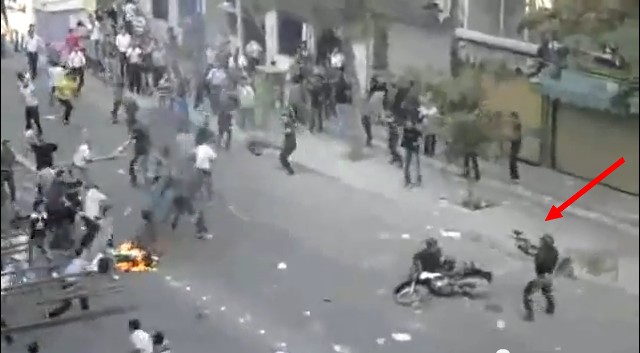
(Urmia city: Iranian police fire on protesters for Lake Urmia)

The publication of the news of the immediate rejection of the plan to save Lake Urmia caused outrage and discontent among the public and environmental activists. Activists of the South Azerbaijan National Movement invited people to protest in the square on August 27, 2011, in response to the parliament's action and the government's lack of attention to the plight of Lake Urmia. On that day, the cities of Urmia and Tabriz witnessed large-scale protests, and as always, peaceful gatherings of the people and activists of the South Azerbaijan National Movement turned violent with the intervention of security forces, and dozens of citizens were detained and injured. In these protests, the people's slogans were mainly sung in Azerbaijani Turkish: "Lake Urmu gives life/Majlis orders its murder", "Lake Urmu is thirsty/Azerbaijan will lose if it doesn't wake up".

(Tabriz: Protest for Lake Urmia)
Square protests of South Azerbaijani Turks increased the sensitivity of public opinion to the drying up of Lake Urmia and increased pressure on the authorities. But despite numerous promises made by the Iranian government to quell public anger, it has taken virtually no effective measures to resolve the Lake Urmia crisis.
Azerbaijan's political and cultural activists have repeatedly tried to organize public protests and published calls in this area, although in some cases the Iranian government has managed to prevent public gatherings by creating a strong security environment and applying police, but in some cases people have faced heavy repression by police and officials. they were able to organize protests in some cities of Azerbaijan.
On Tuesday, June 10, 2014, a protest was held in Tabriz, and this protest, as usual, was met with severe repression by the security and police forces, and a number of participants in the said protest were arrested. On the same day, a large protest was not possible due to the strong security environment in the city of Urmia and the large number of security forces gathered at the predetermined location, but more than 10 Azerbaijani activists were detained.
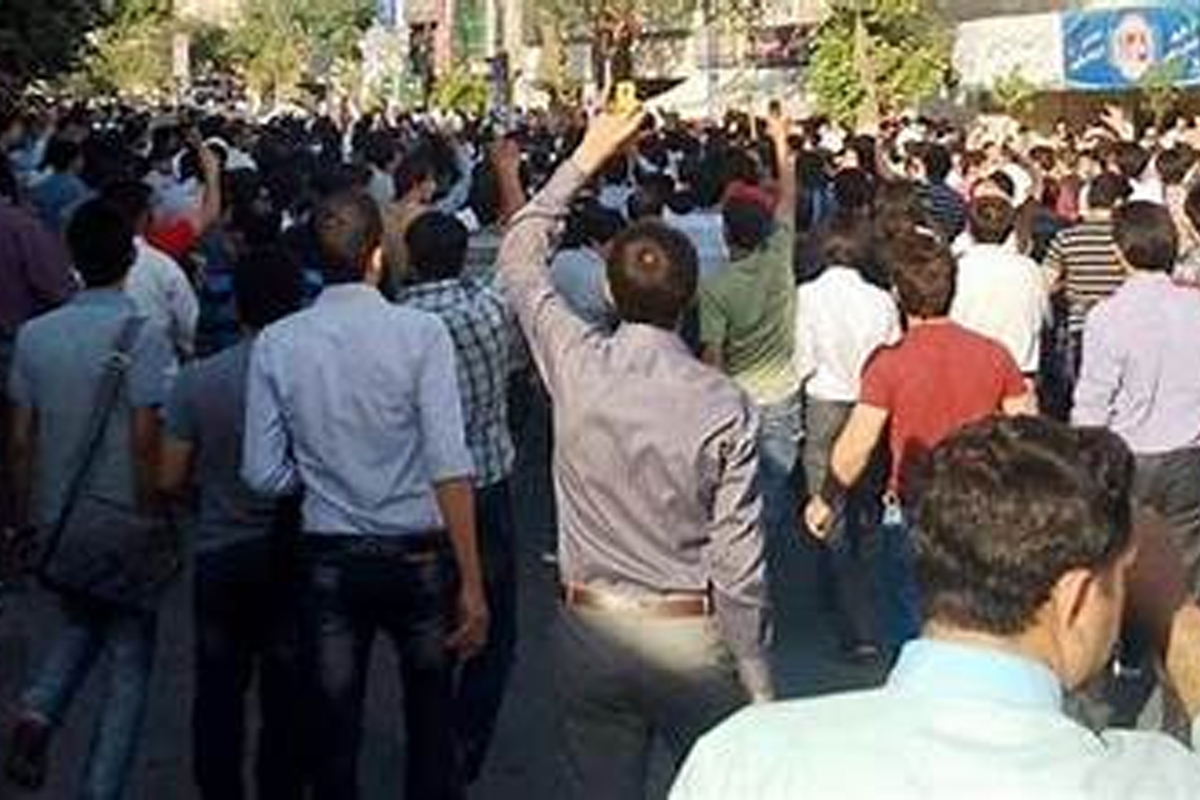
The last protest meeting in this regard took place on July 16, 2022, and during this action, hundreds of South Azerbaijanis protested the drying up of Lake Urmia and the lack of attention of the country's leadership to prevent this disaster. During these protests, it was not possible to organize public gatherings in other cities due to the strong security environment in the cities of Azerbaijan and the large presence of police and security forces. However, dozens of people were arrested in the cities of Urmia, Tabriz, Nagda (Sulduz) and Miyandoab (Goshacay).
It should be noted that in a situation where it is practically impossible to organize peaceful gatherings in the cities of South Azerbaijan to protest the activities of the Iranian government regarding Lake Urmia, some activists of the Azerbaijan National Movement decided to use the tribunes of the stadiums to express their demands and protests. In this context, in almost all sports competitions held in the cities of Azerbaijan, especially in the games of the "Tiraxtur" football team, slogans were raised about the need to revive Lake Urmia, and the unacceptable policies of the government and parliament were criticized.
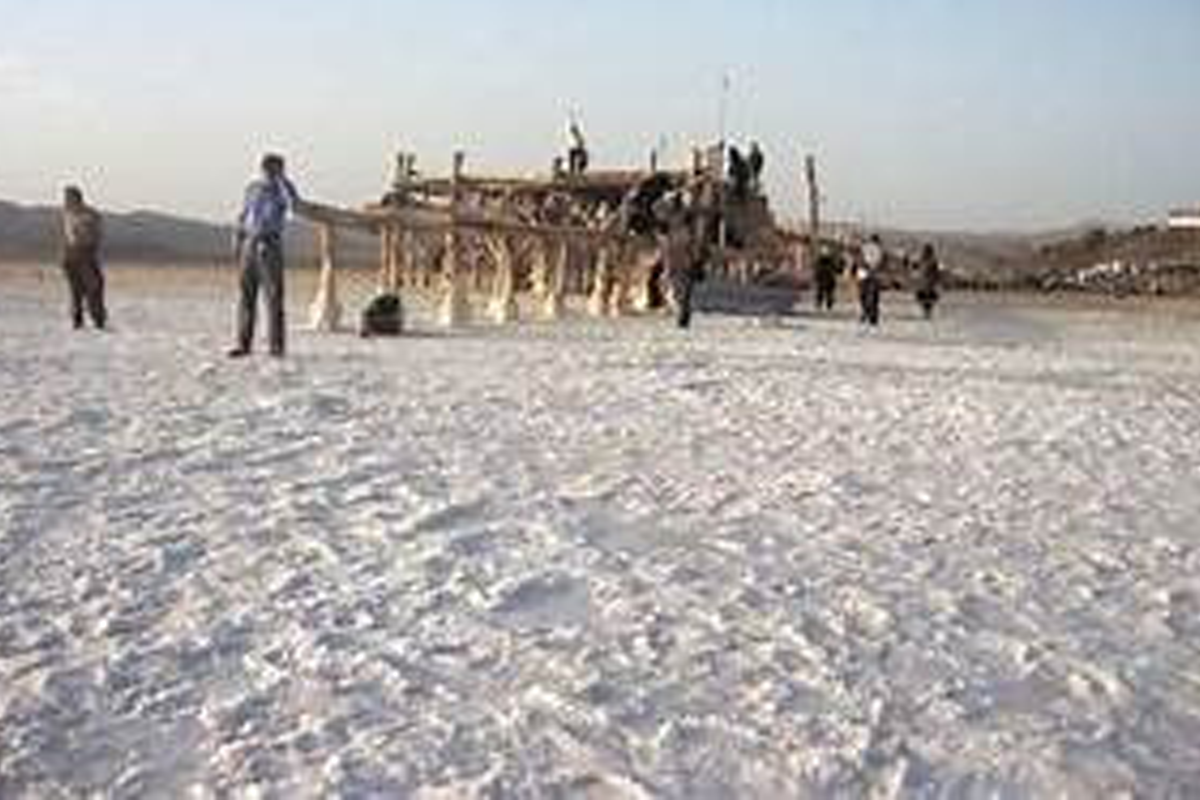
(Lake Urmia transformed into a salt flat; View of the old harbor where passengers boarded ships)
Apparently, the Turks of South Azerbaijan have never remained indifferent to the Lake Urmia tragedy. During these years, they gathered in the squares of the cities many times and conveyed their protests to the world. Over the years, hundreds of people have been arrested and tortured for participating in these protests. It is true that the final result of these protests, that is, the restoration of Lake Urmia, has not yet been achieved, and the Iranian government is determined to completely drain this lake. However, the above-mentioned protests and the activities of the activists of the South Azerbaijan National Movement did not remain fruitless. First of all, the issue of Lake Urmia is no longer limited to a small group of intellectuals and activists of the Azerbaijani national movement, it can be said that the majority of the people of South Azerbaijan, even regional and world journalists and environmental activists are aware of this disaster and express their opinion on this issue. Secondly, many people of South Azerbaijan now know that the Iranian government has deliberately and politically drained Lake Urmia and forced millions of Turks from South Azerbaijan to leave their land.



